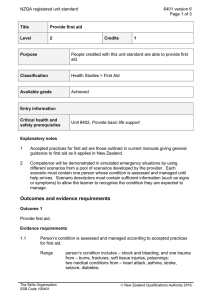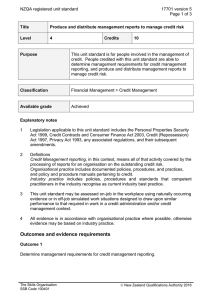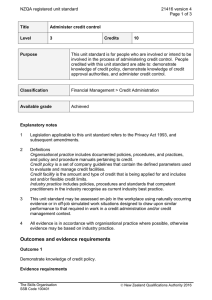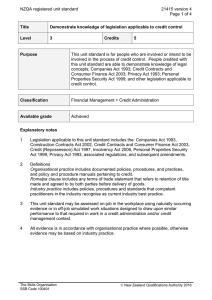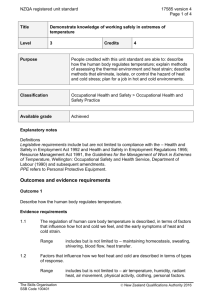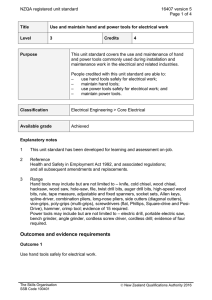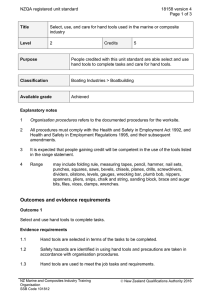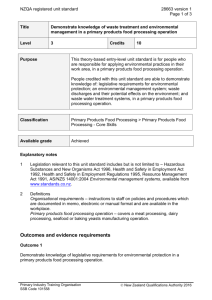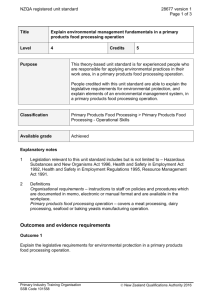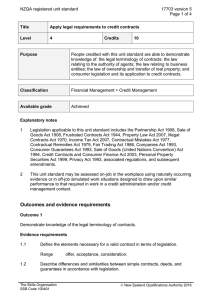28080 Demonstrate knowledge of liquid analytical
advertisement
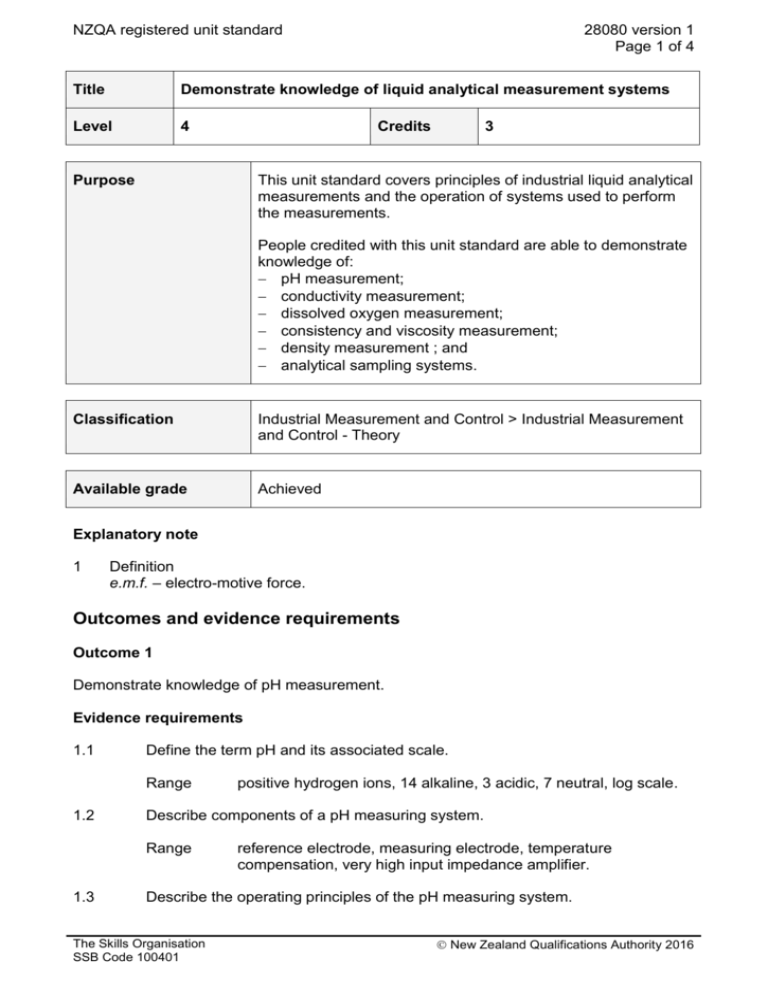
NZQA registered unit standard 28080 version 1 Page 1 of 4 Title Demonstrate knowledge of liquid analytical measurement systems Level 4 Credits Purpose 3 This unit standard covers principles of industrial liquid analytical measurements and the operation of systems used to perform the measurements. People credited with this unit standard are able to demonstrate knowledge of: pH measurement; conductivity measurement; dissolved oxygen measurement; consistency and viscosity measurement; density measurement ; and analytical sampling systems. Classification Industrial Measurement and Control > Industrial Measurement and Control - Theory Available grade Achieved Explanatory note 1 Definition e.m.f. – electro-motive force. Outcomes and evidence requirements Outcome 1 Demonstrate knowledge of pH measurement. Evidence requirements 1.1 Define the term pH and its associated scale. Range 1.2 Describe components of a pH measuring system. Range 1.3 positive hydrogen ions, 14 alkaline, 3 acidic, 7 neutral, log scale. reference electrode, measuring electrode, temperature compensation, very high input impedance amplifier. Describe the operating principles of the pH measuring system. The Skills Organisation SSB Code 100401 New Zealand Qualifications Authority 2016 NZQA registered unit standard 1.4 Identify calibration methods for pH measuring systems. Range 1.5 28080 version 1 Page 2 of 4 buffer solution, backing off unwanted e.m.f.s. Identify problems associated with pH measuring systems. Range electrode cleaning, ultrasonic, mechanical wiping, lead wire connections, probe failure, earthing. Outcome 2 Demonstrate knowledge of conductivity measurement. Evidence requirements 2.1 Describe principles of conductivity measurement. Range 2.2 Define factors to be taken into account when making conductivity measurements. Range 2.3 siemens, micro mho, electrolyte. non-linear solution strengths, temperature compensation, probe constant. Describe calibration techniques. Range amplifier decade box injection, dedicated test equipment, standard solutions. Outcome 3 Demonstrate knowledge of dissolved oxygen measurement. Evidence requirements 3.1 Describe principles of dissolved oxygen measurement. Range galvanic cell, polarographic cell. 3.2 Explain air exposure at valve glands, and its prevention, in relation to making dissolved oxygen measurements. 3.3 Describe calibration techniques. Range The Skills Organisation SSB Code 100401 transmitter adjustment, sample 5% sodium sulphite, water saturated air. New Zealand Qualifications Authority 2016 NZQA registered unit standard 28080 version 1 Page 3 of 4 Outcome 4 Demonstrate knowledge of consistency and viscosity measurement. Evidence requirements 4.1 Describe types and uses of consistency transmitters. Range 4.2 pulp stock, shear forces, force balance, blade type, rotating blade, optical. Describe types and uses of viscosity transmitters. Range oil, liquid, rotational, capillary, float. Outcome 5 Demonstrate knowledge of density measurement. Evidence requirements 5.1 Describe methods of density measurement and state their applications. Range differential pressure, displacement transmitter, weight of fixed volume, nuclear radiation, refractometer, ultrasonic, vibrating mass. Outcome 6 Demonstrate knowledge of analytical sampling systems. Evidence requirements 6.1 State steps to obtain and process an analytical sample and show in a block diagram. 6.2 State the components of a sampling system. Range may include but is not limited to – pumps, valves, flowmeters and switches, filters, phase separating devices, heat exchangers. Replacement information This unit standard and unit standard 28081 replaced unit standard 2641. Planned review date 31 December 2017 The Skills Organisation SSB Code 100401 New Zealand Qualifications Authority 2016 NZQA registered unit standard 28080 version 1 Page 4 of 4 Status information and last date for assessment for superseded versions Process Version Date Last Date for Assessment Registration 1 28 November 2013 N/A Consent and Moderation Requirements (CMR) reference 0003 This CMR can be accessed at http://www.nzqa.govt.nz/framework/search/index.do. Please note Providers must be granted consent to assess against standards (accredited) by NZQA, before they can report credits from assessment against unit standards or deliver courses of study leading to that assessment. Industry Training Organisations must be granted consent to assess against standards by NZQA before they can register credits from assessment against unit standards. Providers and Industry Training Organisations, which have been granted consent and which are assessing against unit standards must engage with the moderation system that applies to those standards. Requirements for consent to assess and an outline of the moderation system that applies to this standard are outlined in the Consent and Moderation Requirements (CMR). The CMR also includes useful information about special requirements for organisations wishing to develop education and training programmes, such as minimum qualifications for tutors and assessors, and special resource requirements. Comments on this unit standard Please contact The Skills Organisation reviewcomments@skills.org.nz if you wish to suggest changes to the content of this unit standard. The Skills Organisation SSB Code 100401 New Zealand Qualifications Authority 2016
